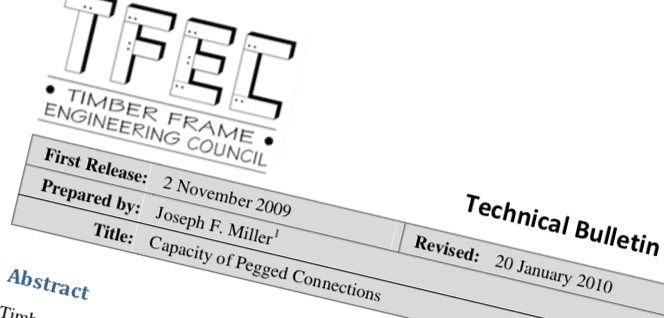
If you are utilizing wooden pegs in your timber frame structure, we recommend close reading of Capacity of Pegged Connections, by Joe Miller, Ph.D. and P.E. Dr. Miller has devoted substantial study to the capacity of wood pegs as they relate to securing the members of a timber frame. Like most of our timber frame fans, we appreciate the aesthetic of the traditional pegged mortise and tenon connections.
However, the design value of wood pegs requires more considered thought in project planning due to their greater flexibility as compared to steel dowels. In this paper, Dr. Miller explores the process and background behind the Timber Frame Engineering Council’s Standard for Design of Timber Frame Structures (TFEC 1-10) recommended method related to pegged connections in the context of modern building codes and design considerations.
Drawing on previous research by his colleagues at Fire Tower Engineered Timber and others, as well as his own research, Dr. Miller updates the bearing equations to reflect the strength and capacity of wooden pegs, which have a lower bearing capacity than same-sized steel dowel connectors. Using two design examples, the withdrawal capacities of two different species of wood in two different joints are calculated. These design examples illustrate the methodology and solutions developed by Dr. Miller.
The technical bulletin includes a helpful chart with tabulated peg capacities for various peg and timber species combinations, which should prove very useful to any one undertaking a timber frame project using traditional materials. Dr. Miller also includes extensive references to additional research should the reader wish to delve further into the engineering related to timber connectors.